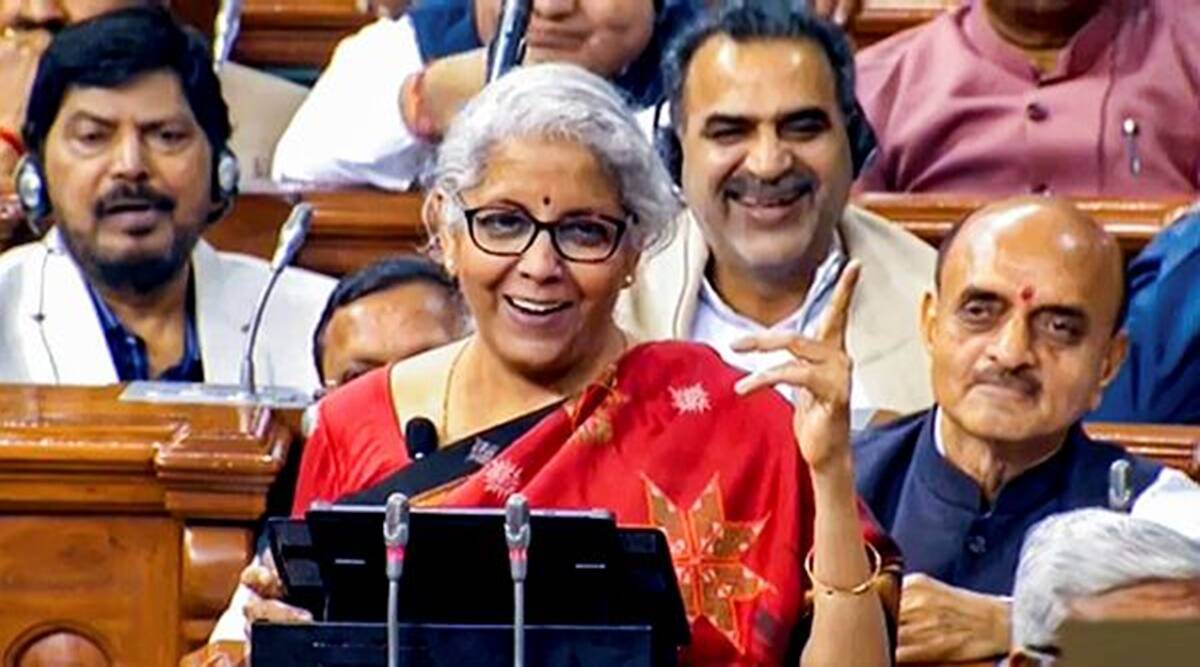As the annual post-budget commotion seems settled, a critical analysis of the budget and the overall opinion seem tilted in favour of Finance Minister (FM) Nirmala Sitharaman. Although it will sound political, the fact remains that the budget has been able to reflect the most used slogan of Prime Minister Narendra Modi Sab ka Saath Sabka Vikas. The idea of inclusive development stressed at the Commencement of the budget speech by the FM was like a mantra loudly chanting to invoke Amrit Kaal’s arrival.
As, unlike other peer economies, the Indian economy possesses unique differentiated demographic properties, inclusive development is a must to scale up and have sustainable development. Inclusive development, as the first saptarishi(seven sages of ancient India who are extolled in the Vedas and other ancient Indian literature)of the Amrit Kaalbudget, has focused heavily on agriculture, health, and education. Decoding the three focus areas under inclusive development,a comprehensive assessment of the budget proposalismade to study how the government plans to achieve – inclusive and sustainabledevelopment.
Agriculture
The Covid 19 pandemic has reaffirmed that agriculture continues to be the backbone of the country’s economy and the most powerful and critical engine of the country’s growth. An increase in overall budgetary allocation for the agriculture ministry to an estimated Rs. 1.25 lakh crore for the next financial year proves that the government is planning to uplift the sector. The government’s favourite PM-KISAN scheme got a hopping share of Rs. 60 thousand crores. The proposal to emphasisedecentralised storage will likely prove the game changer when coupled with multi-faceted operation green.
The proposal to set up an Agriculture Accelerator Fund to encourage startups in rural areas, if implemented in earnest and used in tandem with the establishment of Centres of Excellence for Artificial Intelligence, will revolutionise the entire agriculture and rural economy sooner than expected. This fund will bring innovative and feasible solutions to many problems our agriculture and farmers have been facing.
Digital public infrastructure for agriculture as an open source will facilitate inclusive small farmers-orientedend-to-end farming practices and marketing.
Education
The government’s intention to prepare a solid education structure in the country is largely visible from an 8.3% rise in the financial provisions, which is the highest-ever allocation for education. This year’s budget for education integrates technology, training for trainers, resource distribution, and elementary education to draw a meticulous blueprint for celebrating India at 100.
Allocation of rupees 4000 crores for the PM SHRI (Pradhan Mantri Schools for Rising India) programme to 14500 select schools to impart high-quality education in an equitable, inclusive, and joyful school environment reflects the spirit of strengthening the elementary education system. This year’s increased allocation for Kendriya Vidyalaya Sangathan and Navodaya Vidyalaya Samiti by little more than 11% is aimed at improving our school education. A special focus on the northeastern area by increasing budgetary allocation by 15.6% is a farsighted and welcome step. Further, the plan to extend the accessibility and scope of the National Digital Library (NDL) for school children would enable them to access quality materials. The scheme of assisting states in setting up physical libraries at the panchayat and ward levels can augment the footfalls in NDL for learning. The budget allocation made in Budget-2023 for school education conveys that money will not be aconstraint for having quality elementary education in India.
An estimated expense of rupees 400 crores for the PM research fellowship (PMRF) may see a rise in the number of scholarships for quality research in top-ranked higher education institutions. Further, the outlay for select academic and research institutions has been considerably increased for more focused research and innovation. Premier higher educational institutes of the countries like IITs, IIITs, NITs, IISER, and Central Universities have got sufficient allocation to make India Vishwa Guru again.
Health
The importance of sturdy health infrastructure was well felt during the pandemic’s peak,and the arrangements made in war foot also saved thousands of Indians from the Covid grave. Addressing the needto create a robust health infrastructure, the recent union budget has increased spendingfrom 1.4% of the GDPto 2.1% of the GDP in the current fiscal. To be precise, the health sector has received an increased allocation of rupees 2350 crores from the previous financial year. Specifically, Ayushman Bharat, the flagship health scheme of the union government, has witnessed a hike in the allocation of by rupees 743 crores compared to the previous financial year. Similarly, the national health mission scheme programme has received an allotment of rupees 36,785 crores – which is more than 3000 crores in comparison to revised estimates of the FY 2022-2023.
Pradhan Mantri Ayushman Bharat Health Infrastructure Mission has been provided funds of rupees 4200 crores. Theseincreases in allocation would primarily enhance health services through the creation of infrastructure and skilled human resources. Moreover, the provision for the establishment of 157 new nursing colleges would enrich the human capital dedicated to elementary as well as higher health services.
The overall assessment of the budget-2023 for the health sector indicates that the government aims to improve the entire ecosystem for health and be ready to face any challenge like the covid.
If the intentions and funds allotted to primary sectors of development are to be believed, it seems that the government had a meticulous blueprint for celebrating 100 years of independence as a country which is not only the largest democracy in the world but is also among the few countries which have transformed for better in the most challenging situations. Let’s celebrate and hope for the better.
Sashikanta Khuntia & Niraj Kumar are faculty at the School of Rural Management, XIM University, Bhubaneswar.







